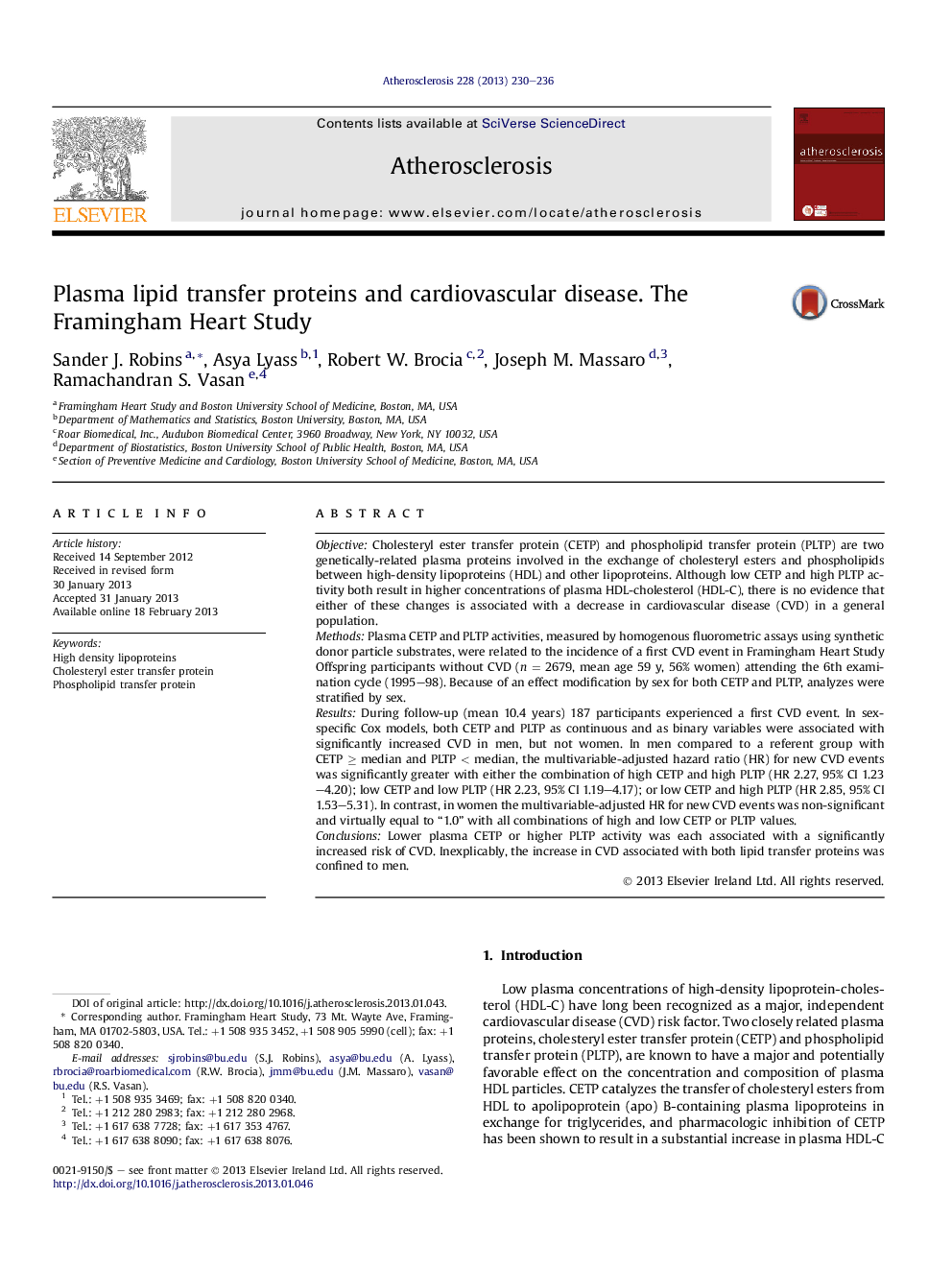| کد مقاله | کد نشریه | سال انتشار | مقاله انگلیسی | نسخه تمام متن |
|---|---|---|---|---|
| 5947678 | 1172372 | 2013 | 7 صفحه PDF | دانلود رایگان |
ObjectiveCholesteryl ester transfer protein (CETP) and phospholipid transfer protein (PLTP) are two genetically-related plasma proteins involved in the exchange of cholesteryl esters and phospholipids between high-density lipoproteins (HDL) and other lipoproteins. Although low CETP and high PLTP activity both result in higher concentrations of plasma HDL-cholesterol (HDL-C), there is no evidence that either of these changes is associated with a decrease in cardiovascular disease (CVD) in a general population.MethodsPlasma CETP and PLTP activities, measured by homogenous fluorometric assays using synthetic donor particle substrates, were related to the incidence of a first CVD event in Framingham Heart Study Offspring participants without CVD (n = 2679, mean age 59 y, 56% women) attending the 6th examination cycle (1995-98). Because of an effect modification by sex for both CETP and PLTP, analyzes were stratified by sex.ResultsDuring follow-up (mean 10.4 years) 187 participants experienced a first CVD event. In sex-specific Cox models, both CETP and PLTP as continuous and as binary variables were associated with significantly increased CVD in men, but not women. In men compared to a referent group with CETP â¥Â median and PLTP < median, the multivariable-adjusted hazard ratio (HR) for new CVD events was significantly greater with either the combination of high CETP and high PLTP (HR 2.27, 95% CI 1.23-4.20); low CETP and low PLTP (HR 2.23, 95% CI 1.19-4.17); or low CETP and high PLTP (HR 2.85, 95% CI 1.53-5.31). In contrast, in women the multivariable-adjusted HR for new CVD events was non-significant and virtually equal to “1.0” with all combinations of high and low CETP or PLTP values.ConclusionsLower plasma CETP or higher PLTP activity was each associated with a significantly increased risk of CVD. Inexplicably, the increase in CVD associated with both lipid transfer proteins was confined to men.
⺠Population-wide (Framingham Study) plasma levels of both CETP and PLTP activities. ⺠Low CETP and high PLTP levels each independently predicted CVD events. ⺠Combination of low CETP and high PLTP resulted in higher CVD risk than either alone. ⺠However, both low CETP and high PLTP predicted CVD only in men (and not women). ⺠The unusual sex-specific risk was not anticipated and is currently unexplained.
Journal: Atherosclerosis - Volume 228, Issue 1, May 2013, Pages 230-236
